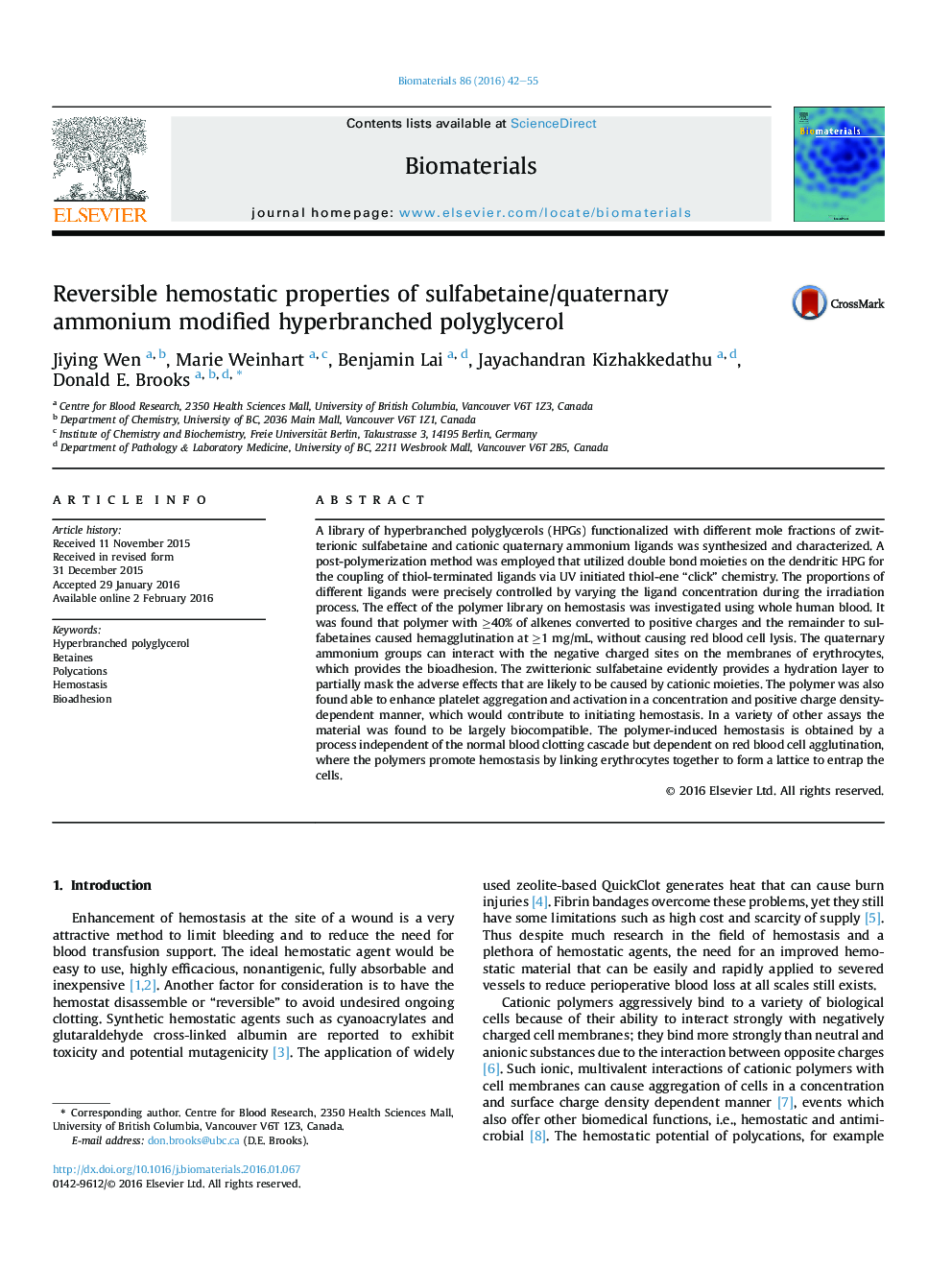| کد مقاله | کد نشریه | سال انتشار | مقاله انگلیسی | نسخه تمام متن |
|---|---|---|---|---|
| 5432 | 384 | 2016 | 14 صفحه PDF | دانلود رایگان |

A library of hyperbranched polyglycerols (HPGs) functionalized with different mole fractions of zwitterionic sulfabetaine and cationic quaternary ammonium ligands was synthesized and characterized. A post-polymerization method was employed that utilized double bond moieties on the dendritic HPG for the coupling of thiol-terminated ligands via UV initiated thiol-ene “click” chemistry. The proportions of different ligands were precisely controlled by varying the ligand concentration during the irradiation process. The effect of the polymer library on hemostasis was investigated using whole human blood. It was found that polymer with ≥40% of alkenes converted to positive charges and the remainder to sulfabetaines caused hemagglutination at ≥1 mg/mL, without causing red blood cell lysis. The quaternary ammonium groups can interact with the negative charged sites on the membranes of erythrocytes, which provides the bioadhesion. The zwitterionic sulfabetaine evidently provides a hydration layer to partially mask the adverse effects that are likely to be caused by cationic moieties. The polymer was also found able to enhance platelet aggregation and activation in a concentration and positive charge density-dependent manner, which would contribute to initiating hemostasis. In a variety of other assays the material was found to be largely biocompatible. The polymer-induced hemostasis is obtained by a process independent of the normal blood clotting cascade but dependent on red blood cell agglutination, where the polymers promote hemostasis by linking erythrocytes together to form a lattice to entrap the cells.
Journal: Biomaterials - Volume 86, April 2016, Pages 42–55